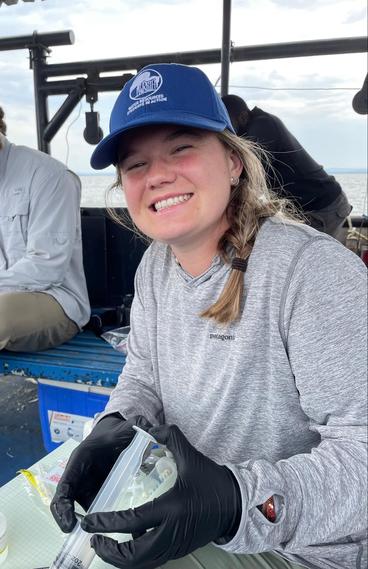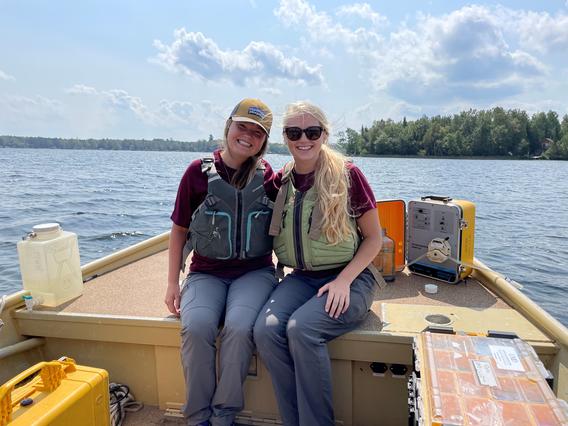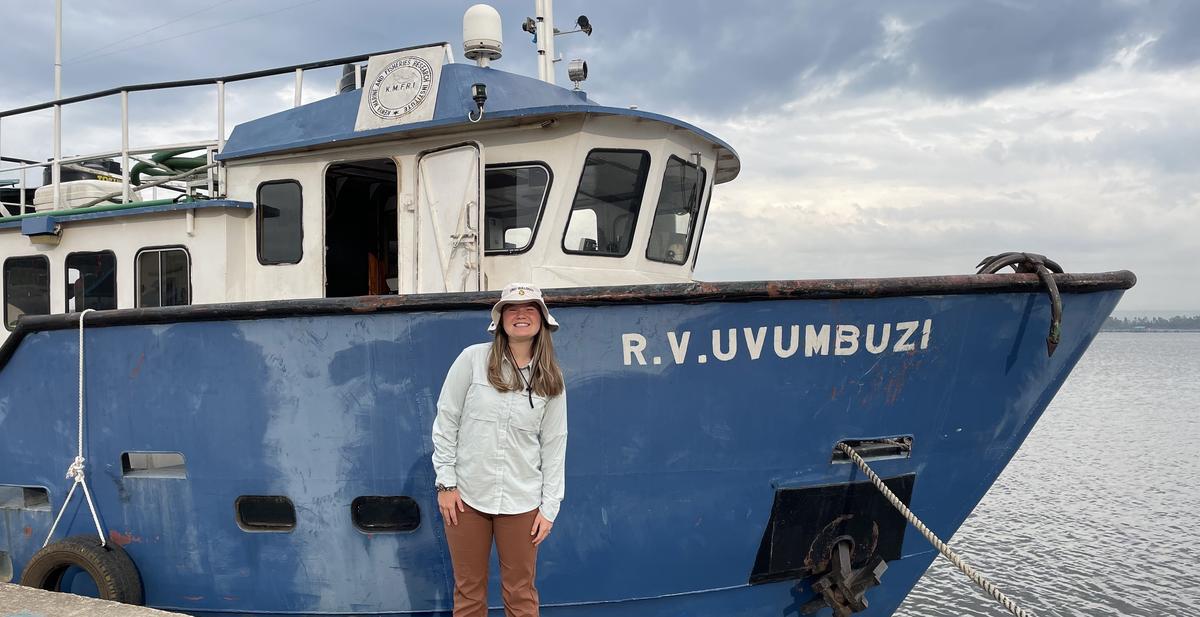My journey throughout the past five years has taken me to all of the Laurentian Great Lakes but also to great lakes on the other side of the world. These experiences have given me the most dynamic and integrated education possible and fresh perspectives that will translate into my new career. As I transition from being a graduate student to starting my first job in the water resources field, the feelings of excitement, curiosity, and eagerness overwhelm me like they did on my first day of grad school.

In February 2018, Duluth welcomed me with an icy blizzard during the prospective student’s meet and greet weekend. Despite not packing the correct winter boots, I was excited to shuffle through the snow and learn more about my potential advisors and the variety of research at the Large Lake Observatory. After mingling and conversing with the current grad students at Hoops, I found Dr. Sheik’s cutting-edge research fascinating. However, I knew very little about these big words like ‘metagenomics’ and ‘metatranscriptomics’. After accepting a position to join his lab, we sat down to discuss my research goals and what “cool stuff” we could do together. This discussion included a lot of him saying, “So nitrogen fixation…” and me replying with, “Well, cyanobacteria…”
By my first day of grad school, I still had no clear vision of where my research was headed. Who knew that cyanobacteria, a microscopic algae responsible for oxygenating Earth’s atmosphere and changing the course of life billions of years ago, would also change the course of my career. It turned out my chemistry background provided the perfect symbiosis with the cutting-edge bioinformatics techniques employed in Dr. Sheik’s lab.
The next summer, I set sail aboard the EPA’s R/V Lake Guardian to collect water samples from the Laurentian Great Lakes for my master’s thesis. This sampling survey led to the first comprehensive view of the nitrogen fixation rates occurring throughout the Laurentian Great Lakes. Something about witnessing all five great lakes in succession provides a fresh outlook and broadens your perspective (see what I did there?). Shipboard field work required me to be awake at unnatural hours, filtering unending water samples, all of which needed to be processed before arriving at the next sampling station, as the R/V Lake Guardian is a 24-hour operating vessel! Seeing the sunset and sunrise on Lake Huron, with little to no sleep in between, had me thinking, “What did I get myself into?”. At least I could always count on the delicious pancakes Chef Dave would make just for me at any time of day or night to get me through the long days spent collecting and processing samples. Although the fieldwork was taxing and demanding, it was rewarding to sample all five Great Lakes. Despite growing up on Lake Erie in Buffalo, NY, admiring the endless horizons from the research vessel led to an even deeper appreciation and love for the Great Lakes, ultimately leading to my decision to stay and endure a Ph.D.

My doctoral degree encapsulated several projects involving not only large lakes but many smaller inland lakes as well. I spent the next two summers routinely sampling lakes spanning Minnesota, putting 16,550 miles on a Ford f150 while towing a 20’ Lund boat. As it turns out, 16,550 miles would be more than enough miles to get me to my big adventure and back.
During this time, a once-in-a-lifetime opportunity slid across my desk, and I quickly applied for it. A few months later, I received a message from Dr. Sheik, saying, “Get your passport ready!”. I had to remind him that I was only working on the Minnesota side of Lake of the Woods, although I would have loved to fish the Canadian side of the waters. Little did I know he was referring to an opportunity that would extend my research beyond North America. I was going to Lake Victoria in Kenya! I was selected to work on an NSF-funded project, spearheaded by the Bullerjahn Lab at Bowling Green State University, collaborating with several Canadian, American, and Kenyan research groups to study harmful algal blooms that have been threatening Lake Victoria’s waters and ecosystems.
While my time as a graduate student at the Large Lakes Observatory is coming to an end, all of my experiences, adventures, collaborations, and friendships will flow into the headwaters of my new career as the Watershed Conservationist for the North St. Louis Watershed and Soil Conservation District. I am excited for the opportunity to continue my work within this beautiful watershed, building upon research, setting new initiatives, and cultivating collaborations to protect our water resources.
